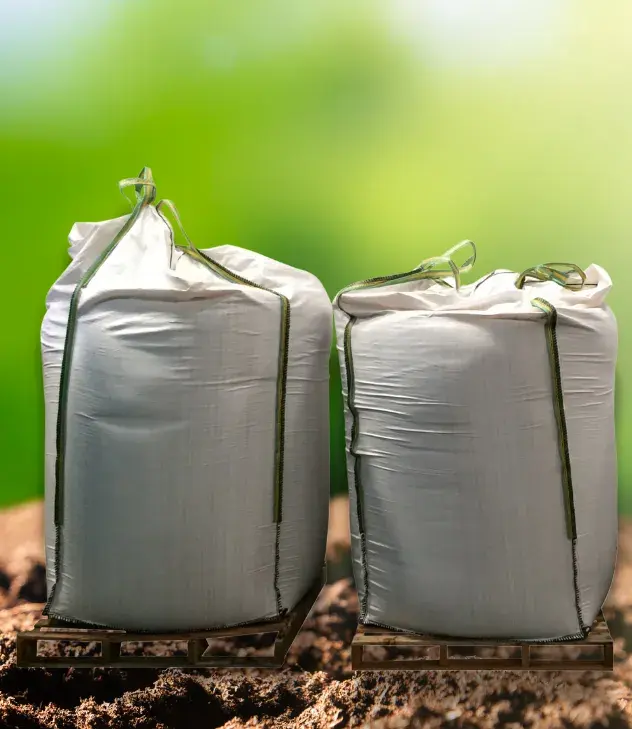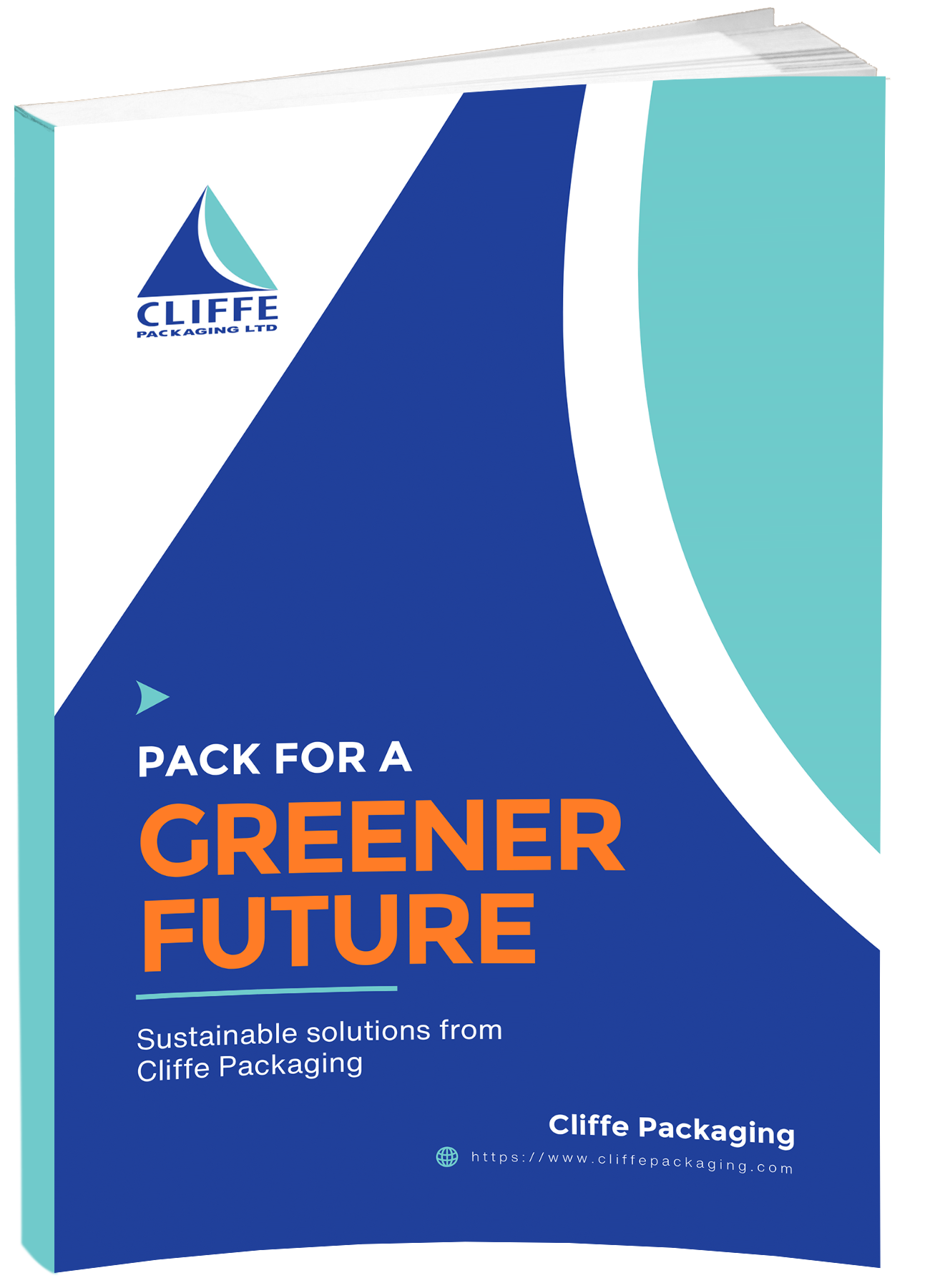Table Of Contents
Introduction: Packing For A Greener Future
Flexible Intermediate Bulk Container (FIBC) bags have been the workhorses of the logistics chain for bulk powdered and dry products since their introduction in the late 1950s. From agricultural grains to cement and paint pigments, these bags have transported it all. Recent shifts in ecological awareness and advancements in packaging technology have underscored the environmental harm caused by many products. These issues stem from the use of non-renewable materials, recycling challenges, and contributions to waste and pollution.
The UK market has seen an intensified focus on sustainability in packaging, driven by both consumer demand and government regulations whilst the introduction of the Plastic Packaging Tax and Extended Producer Responsibilities guidelines has further incentivised businesses to seek greener packaging options.
Making the switch can bring both environmental and financial benefits to your business, supply chain partners, and customers. In this free guide from Cliffe Packaging, we will explain the costs and benefits of migrating to sustainable packaging, and how to make the best strategic procurement choices for your business.
What is Sustainable Packaging And Why Is It Important?
Defining Sustainable Packaging
Sustainable packaging is purposely designed to minimise environmental impact and ecological footprint throughout a product's life-cycle. It incorporates strong, reusable materials with a high proportion of recyclable and/or biodegradable components. This approach keeps packaging out of landfills and makes it easy to recycle or safely destroy at end-of-life.
Sustainable packaging also supports lower overall carbon emissions by contributing to a 'circular economy' where products are kept in use for extended periods and waste is minimised.

Key Benefits of Sustainable Packaging
- Reduced environmental impact.
- Lower carbon footprint.
- Improved brand image and customer loyalty.
- Potential cost savings in the long term.
- Compliance with current and future regulations.
- Support for circular economy principles.
Environmental Benefits
The biggest beneficiary of sustainable packaging is undoubtedly the environment. Traditional polyethylene and plastic packaging have been linked to a host of critical ecological issues. These materials contribute significantly to oceanic pollution, with plastic waste accumulating in our seas and harming marine life. They also lead to resource depletion, as the production of plastic packaging relies heavily on non-renewable resources. The manufacturing process for these traditional packaging materials involves substantial fossil fuel use, contributing to greenhouse gas emissions and climate change.
Furthermore, the widespread use of non-sustainable packaging results in high waste generation, placing a considerable burden on waste management systems and increasing the costs associated with disposal and environmental cleanup efforts. By transitioning to sustainable packaging solutions, businesses can play a crucial role in mitigating these environmental challenges and preserving our planet for future generations.
.webp)
.webp)
Regulatory Landscape
Businesses slow to adopt sustainable packaging practices face increasing financial implications. The UK Plastic Packaging Tax (PPT) is a key example. This levy applies to plastic packaging containing less than 30% recycled content. As of April 1, 2024, the rate increased to £217.85 per metric tonne.
The tax applies to all UK importers and manufacturers who handle more than 10 tonnes of plastic packaging per year. Many construction contractors, wholesalers, and manufacturers fall into this category.
Similar policies have been introduced in the EU under the principle of extended producer responsibility (EPR), which holds producers fiscally accountable for the entire life-cycle of their packaging.
Cost Advantages
Investing in sustainable packaging solutions can bring several financial benefits:
Tax Exemption:
Using packaging with 30% or more recycled materials exempts your business from PPT charges.
Lower Material Costs:
Recycled materials are often more affordable to procure and work with than virgin resources and these savings can be passed on to customers.
Long-term Value:
Sustainable packaging often leads to improved productivity and ecological sustainability in the long run.
Accreditation Support:
Using sustainable packaging can support applications for environmental accreditations like ISO 14001.
By embracing sustainable packaging, businesses can align their operations with ecological responsibilities while potentially improving their bottom line. At Cliffe Packaging, we're committed to helping you navigate these changes and find the best sustainable solutions for your needs.
Choosing the Right Sustainable Packaging for Your Business
.webp)
Sustainable packaging is a booming sector, with a wide variety of products entering the market. For users of bulk packaging solutions, the question is how to choose the right sustainable packaging solution for their products, the demands of their value chain, and the expectations of their customers. Some sustainable products are relatively novel and have not yet been adequately performance tested against the types of plastic materials that are still widely used. Greater sustainability can’t come at the expense of performance, as this will only increase waste and whilst driving up resource use.
So, what are the main considerations for ‘going green’ in your packaging strategy? The following framework can guide you towards an informed decision for your business:
Product type & functionality
Like any choice of packaging, the first factor to consider is the nature of the product being stored or transported. For example, dried foodstuffs, photosensitive materials, and pharmaceutical components require high hygiene standards and superior protection to maintain product integrity during transit and storage. The challenge is to find sustainable packaging solutions that meet or exceed the performance of traditional options while still reducing environmental impact.
.webp)
.webp)
Cost considerations
Budget constraints are a core component of any packaging investment, and the cost of sustainable packaging varies widely. In a lot of cases, sustainable packaging is often more expensive upfront, while other products are less expensive than plastic products. In all cases, a good approach is to consider the long-term cost of ownership associated with your packaging, as while a sustainable FIBC bag costs more upfront, the ability to recycle it, avoid plastic taxes, and market your business as eco-friendly could actually make it more cost-effective over time.
Environmental impact
Sustainable packaging covers a wide range of products, from fully biodegradable and recyclable materials, to reduce plastic components. Very few products can boast zero environmental harm, so it’s important to assess the relative environmental footprint of different packaging options, and make a choice that aligns with your company's sustainability goals. Materials should be evaluated for their carbon footprint (including air miles for imports), recyclability, and biodegradability, as well as their reuse potential.
.webp)
.webp)
The long perspective
It is essential to look at the complete life-cycle of your packaging, from raw material extraction to disposal. End-of-life is where the impact of sustainability is felt the strongest, with materials that are easy to recycle or compost being softer on the environment than those that are not. Not all products can be easily recycled, even sustainable ones, and in these cases, look for biodegradability. The most sustainable packaging will break down naturally over time, without requiring specialist equipment or composting stations.
Seeking expert advice
Sustainable packaging is a new field for many businesses, so it’s often worth seeking out a knowledgeable and experienced sustainable packaging business, such as Cliffe, to help you navigate your options, as well as discuss the regulatory, environmental, and cost implications of different products.

Making The Switch
FIBC bags have been a staple in logistics for decades, but their environmental impact is a growing concern.
This guide explores:
- What is Sustainable Packaging And Why Is It Important?
- How To Choose The Right Sustainable Packaging for Your Business
- Our Best Recommendations
You'll learn how to optimise your packaging while minimising your environmental footprint.
Complete the form to receive your FREE guide today!
Confirm Your Details
Sustainable Packaging Solutions from Cliffe
We are proud to offer a range of sustainable and low-environmental impact packaging solutions for powdered and bulk products. With outstanding load bearing capabilities of 500 kg to 2000 kg and a volume capacity of up to 3 m cube, our bags provide a safe and sustainable storage and transport solution for a variety of goods.
Our range includes:
.webp?width=670&height=444&name=V1_JDRGroup_Cliffe%20Packaging%20-%20Ebook_1414x2000px_nm_20Nov2024%20(8).webp)
.webp?width=699&height=463&name=V1_JDRGroup_Cliffe%20Packaging%20-%20Ebook_1414x2000px_nm_20Nov2024%20(9).webp)
.webp?width=700&height=467&name=V1_JDRGroup_Cliffe%20Packaging%20-%20Ebook_1414x2000px_nm_20Nov2024%20(10).webp)
.webp?width=697&height=438&name=V1_JDRGroup_Cliffe%20Packaging%20-%20Ebook_1414x2000px_nm_20Nov2024%20(11).webp)
.webp?width=700&height=465&name=V1_JDRGroup_Cliffe%20Packaging%20-%20Ebook_1414x2000px_nm_20Nov2024%20(12).webp)
Recycled Content Packaging
All our plastic based packaging can be manufactured with a minimum of 30% recycled content, with some options available using up to 100% recycled material. This reduces the demand for fresh materials, minimises petrochemical use, and helps divert waste away from landfills. Recycled content packaging options include a variety of high-strength bulk bags, pallet wrap, and polythene valve sacks, among other high-quality products.
These products are designed to deliver the same level of performance and durability as their non-recycled equivalents, giving you access to sustainable products without compromising quality.
.webp)
Sustainability Policy
At Cliffe Packaging, our company sustainability policy underscores a deep commitment to responsible sourcing and sustainable manufacturing practices. Wherever possible, we prioritise the use of eco-friendly and recyclable materials, helping our customers align their procurement strategy with their commitment to sustainability. By implementing a comprehensive waste reduction and reuse strategy at our facility and offices, as well as energy efficient processes where possible, we aim to actively minimise our environmental footprint. Our ongoing commitment to high environmental standards is reflected in our ISO 14001 certification, which we received in February 2023.
.webp)
Next Steps
Thank you for downloading this guide. Please get in touch today to find out more about our range of green and sustainable packaging solutions for bulk products.
To open a credit account, please submit an application form, and feel free to call one of our friendly teams on 0845 481 1200 if you have any other questions. We look forward to hearing from you!